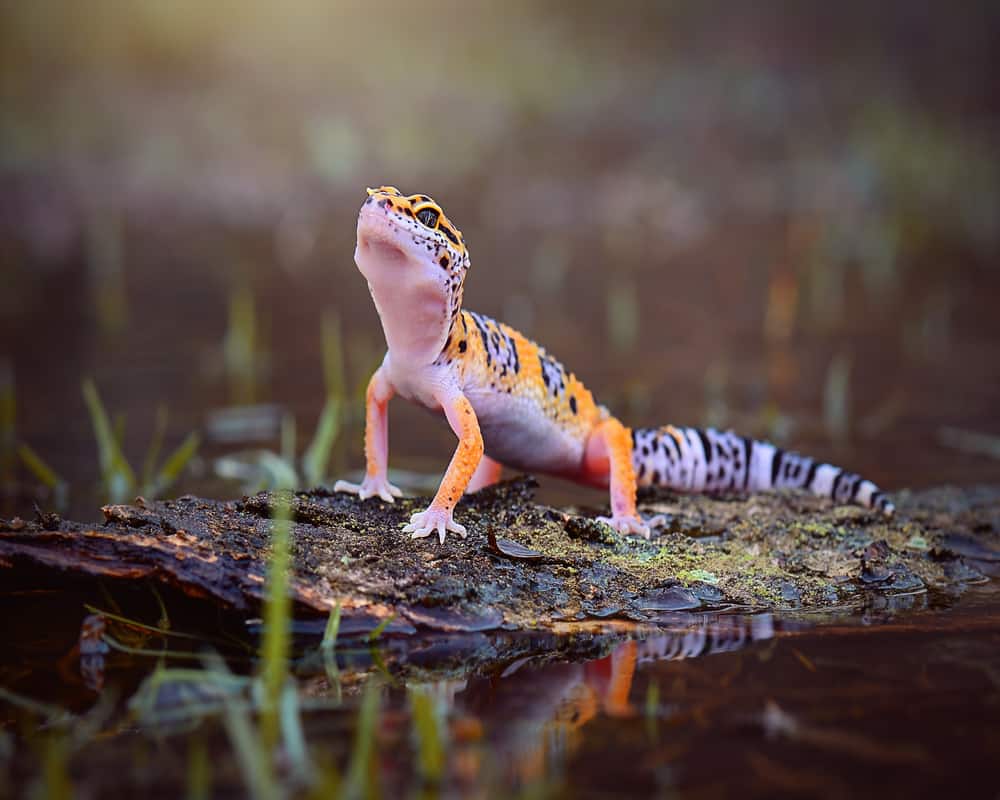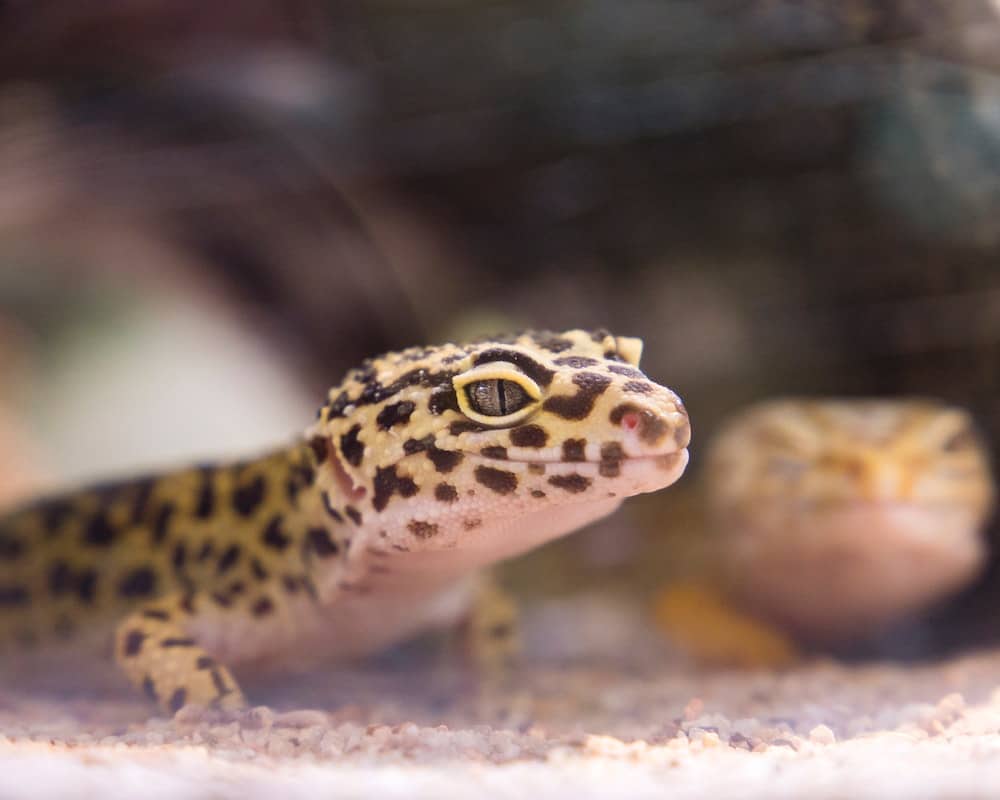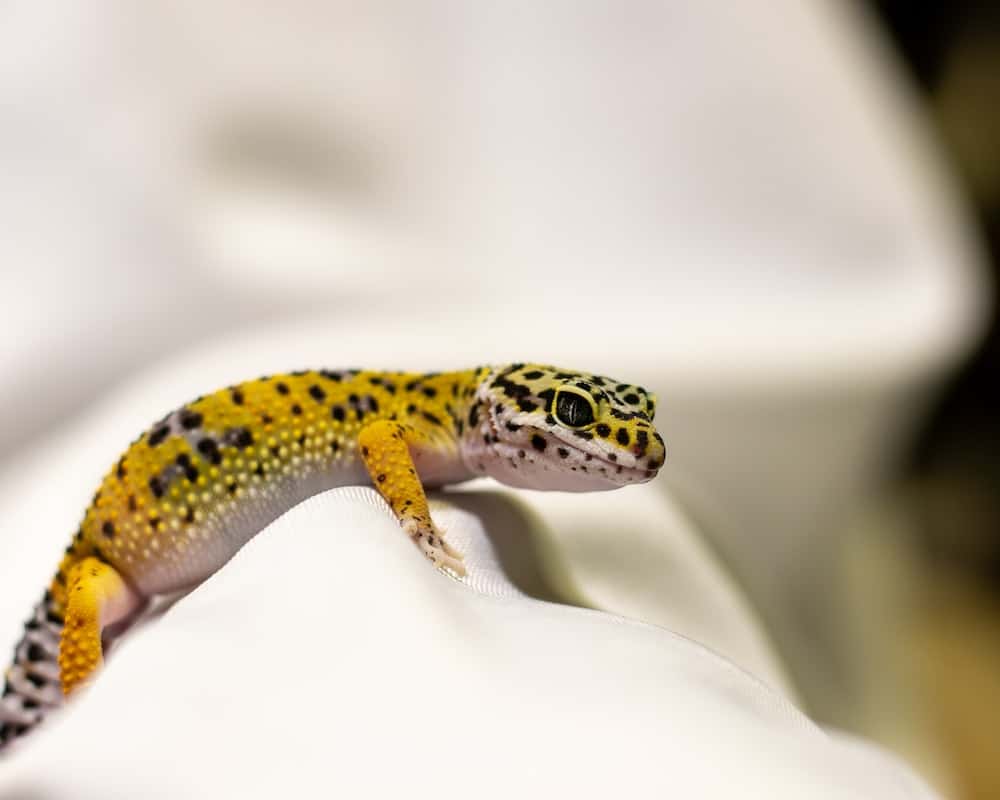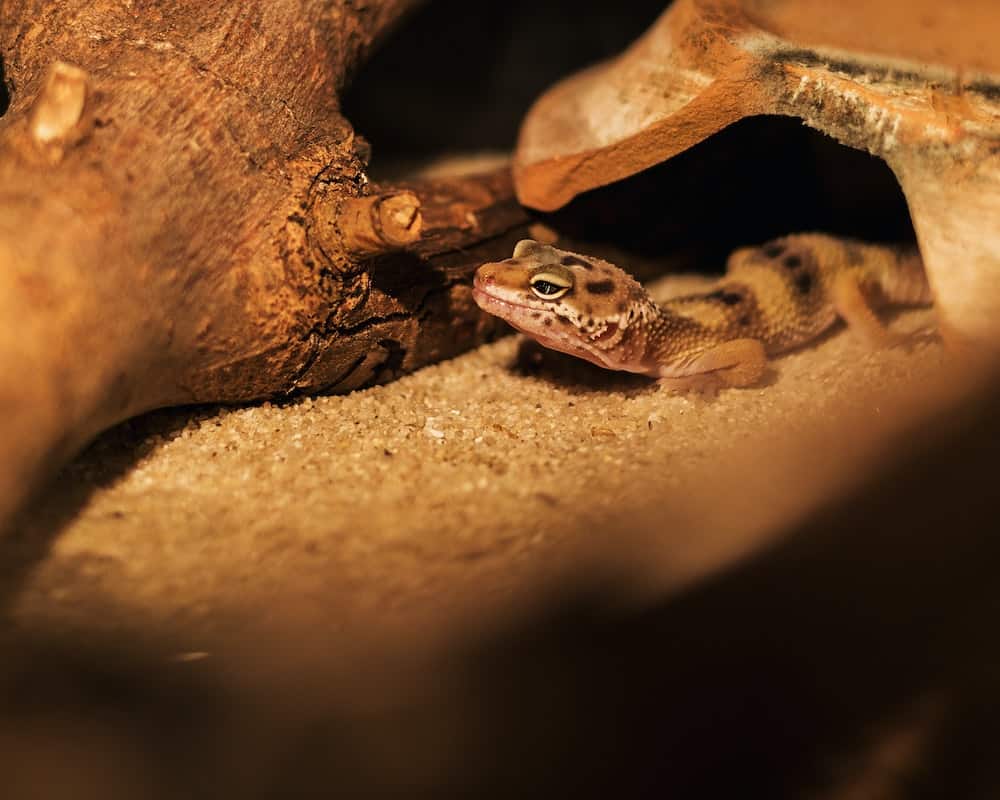Are you curious about whether leopard geckos can get dehydrated like us? What are some dehydration symptoms?
The common symptoms of dehydration include skin-related issues, appetite changes, changes in overall behavior, oral issues, eye issues, and body excretions.
Recognizing signs of dehydration in your pet before it leads to major health issues is essential. Read on to find out how you can recognize those signs and how you can prevent them.
Is It Possible For Leopard Geckos To Get Dehydrated?
The simple answer to this question is yes. Although these reptiles are accustomed to relatively warmer temperatures, they can get dehydrated due to several factors that may be responsible. They require a good amount of water to have healthy bodies.
Key Factors That May Lead To Dehydration In Leopard Geckos
Now that you know these animals can get dehydrated, it is good to know the reasons that may lead to this happening.
- The most common factor is the lack of an appropriate amount of water. These reptiles must have access to clean and accessible water.
- Extreme temperatures and excessively low humidity levels may also lead to quick dehydration. While these geckos are comfortable in arid conditions, extreme temperatures may dehydrate them.
- Health issues such as respiratory problems or digestive issues can also lead to water loss and reduction in water intake, which can lead to dehydration.
- An unbalanced or poor diet without moisture-rich food can also lead to reduced water intake, which can ultimately leave them dehydrated.
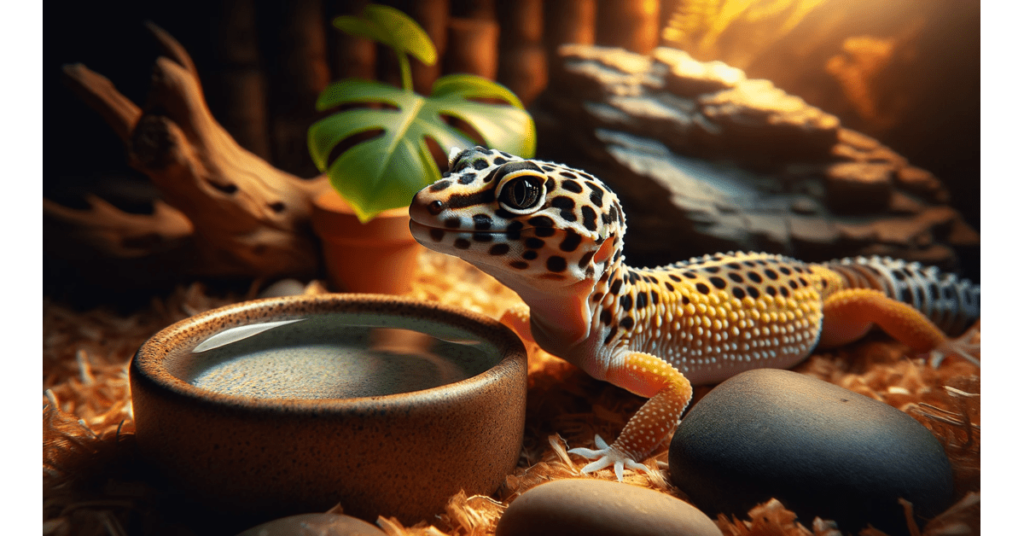
Top 6 Common Symptoms of Dehydration in Leopard Geckos
If you are worried that you may not recognize the signs of dehydration, here are a few symptoms to look out for.
- Reduced Size Of Eyes Or Sunken Eyes
Generally, a gecko’s eyes should appear large, round, and bright. When they seem to have reduced size or sunken eyes, this is a sign that your pet is dehydrated.
This can be due to a lack of moisture levels around the eyes, indicating a lack of adequate hydration.
- Skin Related Signs
You can also find dehydration symptoms by observing your pet’s skin. The skin is typically smooth and free from lumps. It is also moist and slightly lifted.
Hence, if your young reptile has the following signs on its skin, then it is likely dehydrated.
Reduced Elasticity of the Skin
A leopard gecko’s normal, healthy skin is moist and gently pinched. This keeps it intact and healthy. However, if your pet shows a lack of elasticity, it means that it is dehydrated.
Loose Skin or Wrinkled Skin
One extreme sign of dehydration is reduced elasticity, and the other is wrinkled and loose skin. When your gecko moves around, its skin should return to its original position and not be left loose. This is a sign of dehydration.
- Oral Symptoms
Oral symptoms of dehydration include those that can be seen around the mouth and inside it. You can spot these while feeding these reptiles.
Dry Mouth and Sticky Saliva
Lack of water in the body of the leopard gecko can lead to a decrease in the proper production of saliva. This can lead to a dry mouth in your gecko.
Without an adequate supply of water, even when the saliva is being produced, it turns out to be extremely thick and sticky. This sudden change in its consistency is a sign of dehydration in your gecko.
- Appetite Changes
Appetite is a major part of how much water the leopard gecko takes in regularly. Although it may not be a direct symptom, it is a good reason that it can lead to dehydration. Appetite changes are also a type of impaction symptom which is also something to look out for.
Decreased Appetite
These reptiles generally derive their water content from the food they are given. Hence, if they are not eating well or hunting insects from which they feed themselves, it is a sign that they may be dehydrated.
- Behavior Patterns
Some common behavior patterns of leopard geckos that indicate normal health include basking, tail wagging and vibrations, hiding and burrowing, hunting and feeding, shedding, and activity at night.
It is essential to observe their individual behavior pattern as well. However, these are some common symptoms to look for in their behavior pattern.
Weakness or Extreme Lethargy
They are generally active at night and like hunting insects for food. If your pet is not as active as usual, take this as a sign of dehydration due to a lack of energy.
They look weak and start showing signs of extreme lethargy.
Unusual Body Movements or Lack of Movement
Leopard geckos show body movements that include tail wagging or tongue flicking, burrowing or shedding, etc. If your pet stops showing these signs, it may be dehydrated.
Unusual body movements such as tremors, twitching, stiffness, difficulty in moving, or abnormal tail movements are indicators of dehydration as well.
- Body Excretions
If you notice any abnormalities in the excreta of them, then you must take action.
Decreased Urination
Decreased urination can tell you a lot about the health of your pet. One of the most obvious symptoms of dehydration is a decrease in urine levels. They tend to urinate regularly and eliminate waste from their body as well.
Hence if you notice a sudden decrease in urination, this could be a sign of dehydration.
Concentrated Urine
On dehydration, the their kidneys tend to reabsorb water as much as possible from the urine. This increases the concentration of other chemicals and products in the urine.
Hence, the concentration may increase, which is a major sign of dehydration.
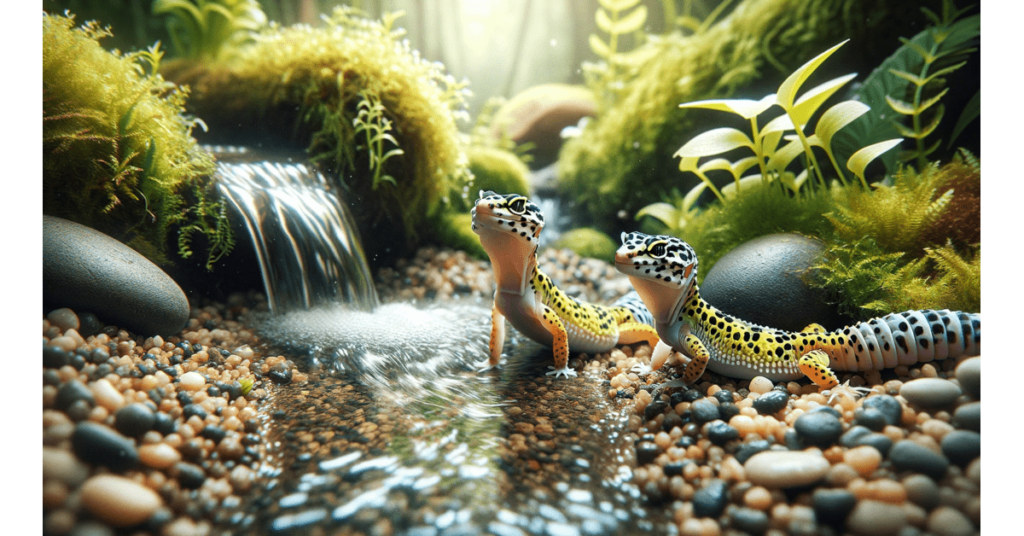
Suitable Conditions For Hydrations You Can Arrange For Your Leopard Gecko
One of the major ways you can prevent dehydration is by providing adequate water and ensuring that it is in a suitable environment. You can arrange these conditions, especially when you know summer is near!
Access To Water
One of the easiest ways to ensure hydration for your gecko is by providing access to water.
You can do so by providing a shallow dish filled with clean and fresh water so they can comfortably access and soak in it.
Hydration from Food
Another simple way to ensure hydration is by providing food that is rich in moisture. Give live insects such as crickets or roaches whenever you feed your gecko.
Providing them with a complete and balanced diet will ensure hydration even during excess heat.
Moist Hides
A moist hide surrounding the enclosure can increase the humidity levels to be more suitable for them. These are generally a shelter or hiding spot for them to experience the natural burrows they crave in the wild.
Having proper moist hides that are neither too dry nor too wet is essential for good hydration and easy shedding of skin. A moist substrate in their enclosure can also provide the same experience and keep them well-hydrated.
Misting Regularly
Misting involves spraying droplets of water into the enclosures of these leopard geckos to increase the humidity levels for a temporary period. They generally thrive in low-humidity environments, but misting can be beneficial to avoid them becoming dehydrated.
It can be performed by using a clean spray bottle and filling it with clean water. Ensure you do not do it too often, as extreme water can also be harmful.
Observation
Making arrangements for the ideal environment for your leopard gecko to avoid becoming dehydrated, it is also essential that you monitor its behavior on a regular basis.
This implies that you should have a general idea of how your pet behaves and what its appearance is like when it is in its ordinary and healthy state.
Knowing these things about your pet can make it easier to spot symptoms of dehydration at an earlier stage. Look out for signs that we discussed before, and make sure you take steps immediately to rehydrate it.
The longer it stays dehydrated, the more it leads to deteriorating health.
Conclusion
It is essential to ensure proper hydration for them to function well and remain healthy. It is essential to know that while they can tolerate mild dehydration, anything more than that can lead to health problems and issues.
Knowing what symptoms to look for can help prevent your pet from becoming dehydrated and lead to a healthy lifesyle.
It is worth knowing that if you have concerns regarding the health and hydration of your pet, it is recommended to consult a veterinarian for assistance and advice. I hope the article has provided everything you need to know about dehydrated leopard gecko symptoms.

